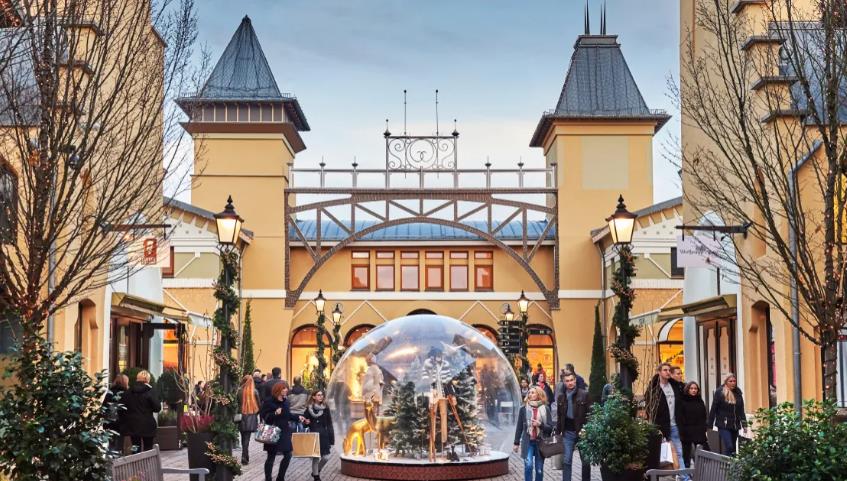https://uk.trip.com/moments/destination-puebla-1852/
2025 Puebla Travel Guide: Must-see attractions, popular food, hotels, transportation routes (updated in August)
Puebla Today's weather
Cloudy 13-25℃
All Trip Moments about Puebla
Cable car in Puebla - Mexico 🇲🇽
Taking the cable car is a popular activity which you should experience if you are in Puebla. The city is kind of small so if you are stayin in downtown you can walk everywhere to explore the beautiful streets and colorful architecture. The advantage of the cable car is that you can see the whole city from above without any effort involved. You can plan perfectly two nights and three days of your holidays in this city to enjoy a relaxing environments and the activities nearby. Speaking of food, it would take a long time to sample all the traditional dishes. Every speciality is reasonably-priced so there is no excuse to try some local cuisine. #createwithtrip #puebla #mexicoRafael Osorio12I Fell in
I Fell in love with downtown Puebla, super colorful and cozy, we walked through its streets and ate delicious foodCandela.mont4Puebla 4 Days Travel Guide
📍 Itinerary Overview 🚩 Sightseeing Route 🏖️ Must-Visit Attractions 🚇 Transportation 📷 Photo Spots 🍜 Local Cuisine 🏠 Accommodation 💡 Tips_TI***vnUNESCO heritage site PUEBLA
On the 3rd day of the Latin American backpacking trip, we took a two-hour bus from CDMX to Puebla, one of the most representative Spanish colonial cities in Mexico, with a profound and well-preserved colonial history. She was officially established by the Spanish in 1531, formerly known as the "City of Angels" (Puebla de los Ángeles). It is one of the few new cities in the Americas that was fully planned and built by the Spanish, rather than expanded on the basis of the indigenous city. The city streets are in a regular checkerboard pattern, like Barcelona without diagonal streets. The moist and imposing marble on the sidewalks is very similar to Malaga, a resort on the southern coast of Spain. There is a different world inside the gate of every household, with exquisite courtyard fountains⛲️ and gardens, typical of the Moorish architectural style of Andalusia. This architectural language, which combines the indigenous people, Spanish colonists and Arab Moors, is unexpectedly harmonious. Because Mexico is in an earthquake-prone zone, the buildings are built short and solid. The only exception is religious buildings. There are a large number of churches, monasteries and schools built by Spanish monks in the city. They are tall and luxurious, showing a strong Baroque and neoclassical style. - Iglesia de Santo Domingo - Puebla Cathedral - Sanctuary of Our Lady of Mercy ⚠️Note that many museums in Mexico are free on Sundays and closed on Mondays. I missed the National Train Museum of Mexico and Museo Casa de Alfeñique that I had been thinking about. As a tourist city, Puebla is more for local Mexican tourists. Foreigners are not common, and I haven't seen any Chinese. There are not many restaurants. Walking in the wide streets of Puebla and looking at the bustling crowds, it seems to have come to Macondo in my dreams.Stef_G1Where to go for the weekend? The Angel City of Puebla in Mexico
The Angel City Puebla is the fourth largest city in Mexico, a historic city of Mexico, located a 2-hour drive from the capital, Mexico City, and is a great place to relax on the weekend. Puebla was founded in 1531 and is a typical Spanish-style city situated at the foot of the Popocatepetl volcano. In 1987, UNESCO listed Puebla, this historic city, as a cultural heritage site in the 'World Heritage List'. Must-see churches⛪️, must-visit Talavera ceramic boutiques, some brands offer customization, incorporating your own ideas and designs. The town with the most churches in Mexico, there are 365 churches, including: Catedral de Puebla Convento de San Francisco Templo de San Cristobal Capilla de Rosario Templo de Santo Domingo Highly recommend Museo Amparo for both permanent and temporary exhibitions, which are very interesting. The rooftop café is an excellent spot to admire the various churches of Puebla, although the coffee and desserts are quite ordinary. Recommended restaurant Mural Poblanos, offering various moles and fusion cuisine, with an average cost of around 600 pesos per person.FIONA BRADLEYcatedral de puebla
Near casa Pepe. Nice place to eat, enjoy an ice cream or drink coffee.ittonycashVolcano exploring close to CDMX
Puebla Puebla Getting There - Take a guided tour from puebla or get in there by yourselfe in google maps "parque nacional iztaccíhuatl" (you might need a 4x4 vehicle to get to the start checkpoint) Attractions - National volcano park iztaccíhuatl Hotels - none, vetter stay in Puebla, climb up to the camp sute will take less than 5 hours from the highest car park. DON'T GO ON A CRAMPED WEEKEND or you will add extra 4 kms on hard walking terrain Food & Restaurants - last one standing at the bottom of the mountain, eat there or get no more options Shopping - in the town next to the mountain you can get groceries and tacos if you come back late night, nothing else ##volcano #travel #mexico #iztaccíhuatl #mytripvlog #핑크캠핑 #hikingorotripPuebla Cathedral
The city of Puebla, located 90 miles from Mexico City, was built in 1531 and is known for its Baroque and Spanish colonial style architecture. It was listed as a World Heritage Site in 1987. In the surroundings of Puebla, there are countless scattered churches (some say 365, one per day, takes a year to visit all), among which the historic Catedral de Puebla is the most famous. Stroll through its 14 small churches, admire the 16th century paintings, and marvel at Mexico's tallest twin bell towers. Experience the cultural collision in history and the ultimate fusion.Henry.Rivera^771Hiking at National Park Iztatcihuatl
If youn enjoy hiking at a mid difficulty level try this National Park, located 2 hours away from the city of Puebla it features 2 amazing volcanoes located next to each other. In this case I'm on the top of Iztaccihuatl. "The sleeping lady" and the volcano in front of it is Popocateptl. However you should only hike on the Iztaccihuatl volcano due to the risky and active nature of Popocateptl, which on the contrary of the sleeping lady, is a very very veeeery active volcano, with constant explosions on a daily/weekly basis. Can exoerience the park camping as well or book a tour guide, not sure about hotels. Max altitude was 5200 meters Reached 4650 on this hike without vertical equipment. #volcano #hiking #natureorotrip2Getting Th
Getting There - Attractions - Hotels - Food & Restaurants - Shopping -_TT***44

Popular Puebla Topics

2025 Recommended Attractions in Puebla (Updated August)
8 posts

2025 Recommended Guides in Puebla (Updated August)
3 posts
Post
More Recommendations
Popular Destinations
Hua Hin Travel | Ayada Travel | Fukuoka Travel | Arzachena Travel | Powys Travel | Kilifi Travel | Mactan Island Travel | Uusimaa Travel | Shengsi Travel | Arezzo Travel | Hoffman Estates Travel | Islay Travel | Calpe Travel | Jessamine County Travel | Ifugao Travel | Sister Islands Travel | Benidorm Travel | Primorsky Krai Travel | Val Verde County Travel | Redding Travel | Pirna Travel | Weesp Travel | Guantanamo Travel | Jabiru Travel | Brondby Travel | Podgorica Travel | Southampton Travel | Sequim Travel | North Berwick Travel
Recommended Attractions at Popular Destinations
Popular Attractions in Bangkok | Popular Attractions in Manila | Popular Attractions in Tokyo | Popular Attractions in Taipei | Popular Attractions in Hong Kong | Popular Attractions in Seoul | Popular Attractions in Kuala Lumpur | Popular Attractions in Los Angeles | Popular Attractions in Shanghai | Popular Attractions in New York | Popular Attractions in Shenzhen | Popular Attractions in Osaka | Popular Attractions in Singapore | Popular Attractions in London | Popular Attractions in Guangzhou | Popular Attractions in San Francisco | Popular Attractions in Beijing | Popular Attractions in Macau | Popular Attractions in Bali | Popular Attractions in Jakarta | Popular Attractions in Paris | Popular Attractions in Ho Chi Minh City | Popular Attractions in Istanbul | Popular Attractions in Phuket | Popular Attractions in Chicago | Popular Attractions in Seattle | Popular Attractions in Toronto | Popular Attractions in Orlando | Popular Attractions in Cebu | Popular Attractions in Chiang Mai
Popular Restaurants in Puebla
Carbón Parrilla de Barrio - Angelópolis | El Encanto | Casa Barroca | Jardin del Asador | Le Crapaud | Don Pastor Reforma | Bistro y Vinos | El Maestro Asador | Cafe Wimpy's | El Mural de los Poblanos | Restaurante Santo Menjurje | Jardín del Asador | Restaurante Casa de los Munecos | Comal | Mr. Pampas - Angelópolis | Antigua Taqueria La Oriental | Pampas Puebla | El Parrillaje | Tagers | La Casa del Mendrugo | Don Pastor Victoria | Utopia, Belgian Beer & Bistro | Barrio Bar Mexican | Santo Agave | Almozero | Jardin del Asador San Diego | Lizarran La Paz | IQ café | El Pillo | Las Ranas
Popular Ranked Lists
Popular Luxury Hotels Near Miri | Popular Luxury Hotels Near Smaliavichy District | Popular Trending Attractions in Xiamen | Popular Premium Hotels in Tehran | Top 50 Must-Visit Restaurants in Bali | Top 10 Trending Attractions in Osaka | Popular Best Things to Do in Leye | Top 20 Luxury Hotels near Rutherford | Top 50 Must-Visit Restaurants in Munich | Top 10 Luxury Hotels near Krasnogorsky District, | Top 50 Must-Visit Restaurants in Kuala Lumpur | Top 20 Luxury Hotels near Madinet Al Bayadeyah | Popular Best Things to Do in Renhua | Popular Trending Attractions in Bali | Top 10 Premium Hotels near Williamson County | Popular Luxury Hotels in Tov | Popular Premium Hotels in Bujumbura | Top 20 Luxury Hotels near Alameda County | Popular Premium Hotels Near Lancaster County | Top 10 Best Things to Do in Kathmandu | Top 50 Luxury Hotels near Costa Occidental | Top 50 Must-Visit Restaurants in Seoul | Top 50 Best Things to Do in Ho Chi Minh City | Top 50 Must-Visit Restaurants in Langkawi | Top 10 Best Things to Do in Phnom Penh | Top 10 Trending Attractions in Chongqing | Top 10 Premium Hotels near Ajibata | Top 50 Must-Visit Restaurants in Florence | Top 50 Must-Visit Restaurants in Sapporo | Top 10 Luxury Hotels near Sin el Fil
About
Payment Methods
Our Partners
Copyright © 2025 Trip.com Travel Singapore Pte. Ltd. All rights reserved
Site Operator: Trip.com Travel Singapore Pte. Ltd.
Site Operator: Trip.com Travel Singapore Pte. Ltd.